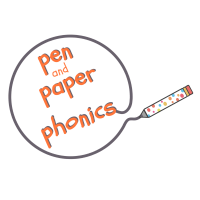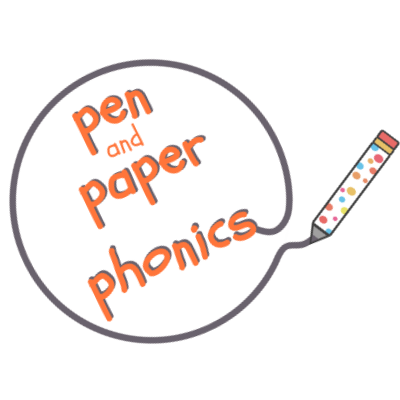Letters and Sounds are the basic building blocks of all phonics.
- ‘Letters’ refers to the actual physical, or written, letters of the alphabet (also called ‘graphemes’).
- ‘Sounds’ are the sounds that these letters make (also called ‘phonemes’).
There are 26 letters in the alphabet.
There are about 44 sounds that make up all the words in the English Language.
We use the 26 letters of the alphabet to write these 44 sounds.
Some sounds are written with one letter:

Some sounds are written with two letters:

Some sounds are written with three letters:

Some sounds are written with four letters:

In these examples, one sound is represented by more than one sound.
For example, the sound at the beginning of ‘shop’ is represented by two letters, ‘s’ and ‘h’. If you were to break the sounds apart in the word shop (without having seen the word) you would get three sounds ‘sh-o-p’:

If you were to break apart the word ‘eight’ you would only get two sounds ‘eigh-t’ because the four letters ‘eigh’ only make one sound:

Letter Sound Correspondence
Letter-sound correspondence refers to the ability to know what sound each letter (and each combination of letters) makes.
For a child to learn to read the word ‘cat’:
- They need to know that the letter ‘c’ represents a /c/ sound in a word, the letter ‘a’ represents the /a/ sound and the letter ‘t’ represents the sound /t/.
- Then they need to be able to sound out and blend these sounds together. (See Blending and Segmenting).
That all sounds quite manageable.
What makes letter-sound correspondence difficult is that one sound can be written with different combinations of letters, and the same combination of letters can make different sounds….er, yeah!
- A famous example is the word underneath. What would you say it said?

- It’s actually an alternative spelling for a very common word…

…fish!
So, in English, there can be more than one way of writing a sound:

And more than one way of pronouncing the same letters:

How Sounds Are Said
How sounds are pronounced is important. This is because it can potentially be quite confusing if a child is not pronouncing them correctly.
Take ‘cat’ (again!)
If a child sounds out ‘cuh’-‘a’-‘tuh’ they have added two extra sounds into the word, making it harder to sound out.
Therefore they need to be taught to say the sounds as crisply and as precisely as possible.
Sounds can be divided in voiceless sounds (the voicebox is not used to make the sound), voiced sounds (the voicebox is used to make the sound) and continuant sounds (they don’t have an ‘end’, the sound keeps going. In actual fact, continuant sounds are a mixture of voiced and voiceless, so the categories aren’t perfect, but they help with pronunciation).


